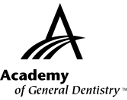|
Exercise No. 375
Subject Code: 016
Pharmacotherapeutics
The 15 questions for this exercise are based on the article, What every dentist should know about metformin, diabetes, and cancer, on pages 70-72. This exercise was developed by Anthony S. Carroccia, DDS, MAGD, ABGD, in association with the General Dentistry Self-Instruction committee.
|
Reading the article and successfully completing this exercise will enable you to:
- discuss basic facts about metformin;
- recognize its side effects; and
- understand its potential role in the treatment of head and neck cancer.
|

